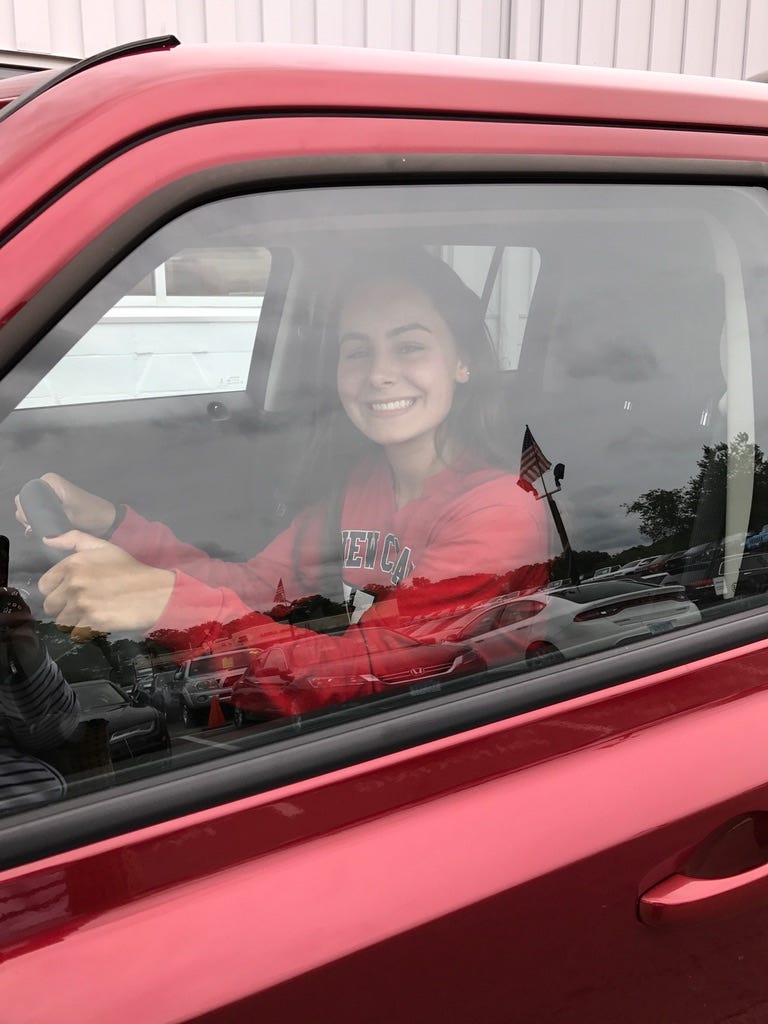Penny Post #26: Driving
I'm convinced that we are our worst versions of ourselves behind the wheel.
I spend approximately 10 hours in my car each week. Roughly 1.5 hours a day. That is two iterations of Kacey Musgrave’s Golden Hour, one and a half Unlocking Us with Brené Brown episodes, or a hell of a lot of time of think.
I spend nowhere near as much time with my closest friends nor family. My car (aptly named Ruby) has become my closest companion in time spent together alone. I’m reminded of Bumblebee, Shia Labeouf’s fateful protector and friend in the early Transformer movies.
Although Ruby has never defeated a terrifying host of Decepticons that have travelled to Earth from another planet to destroy it, she got me through high school which is, more or less, the same thing.
In a similar way to how dogs mirror the appearance of their owners, so too do cars. A car’s make, model, and year can reveal so much about its owner’s socioeconomic status, ambitions, and beliefs. Especially when said driver buys tinted windows that afford them a kind of anonymity that may or may not excuse the worst of their behaviors behind the wheel.
After six years together, Ruby’s spirit is an extension of mine - albeit gloriously metallic and decked in leather. She is an endowed being that holds some of my best and worst memories: late night car rides with friends screaming at the top of our lungs in all of our teenage angst and desire; road trips to and from Notre Dame where nostalgia would rule the road; the first offering of a penny - that had laid hidden in my pile of spare change - and spurred a vulnerable conversation and the title of this newsletter.
I spend sixty-five dollars a week to feed her (thank you California gas prices) which rivals the amount of money per week I spend to feed myself. She is as much an extension of me as my bank account chooses to demonstrate. Which is a pretty sweeping demonstration. Trust me on this.
In my several hours per week thinking about cars while in one, I find myself simultaneously fascinated and horrified by the behavior of the cars around us. There is the hot pink tesla that speeds into the HOV lane without signaling. There is the cautious Prius whose left blinker light is out yet merges anyway. There is the Malibu chevy whose bumperstickers tell me their occupant’s obsession with their chihuahua. Ha. But, in all seriousness, how are humans - as mistake prone and fault bearing as we are - allowed to operate a four thousand pound hunk of metal? further: & call her Ruby?
I’ve seen first hand how driving can bring out the worst in people: the decorative middle fingers that have found their way into my rearview mirror, the Waze notification that alerts me to a crash up ahead, the ridiculously hurtful names I call strangers on the road. I mean, how often do you call someone an *insert expletive here* other than behind the wheel? My answer is never. Only behind the metal and glass and crushing hymn of fuel finding its way into the air do I feel safe and galvanized enough to burn that bridge.
And yet, motor vehicles are the way in which I foster connection, try something new, and make my way home. Ruby has allowed me to travel far and wide, every roadtrip spawning it’s own hours-long playlist. We’ve romanticized driving as a metallic escape, where we can speed faster than originally possible to places both on and off the map. Its wheels bring us to an old lover, inspire deep contemplation, and offer a petal-to-the-metal kind of relief.
Nothing in American culture is as decisive as our motor vehicles. They are a rite of passage, a status symbol, and are our most dangerous tool. I’m fascinated in how they’ve intersected our humanity and often sped off with it in a dust cloud on Route 66.
We have power behind the wheel. And that is felt in just about every song you’ve ever heard. I’ll leave you with one as I hear my engine click and drive away from this essay…
Until next time,
Kiera





